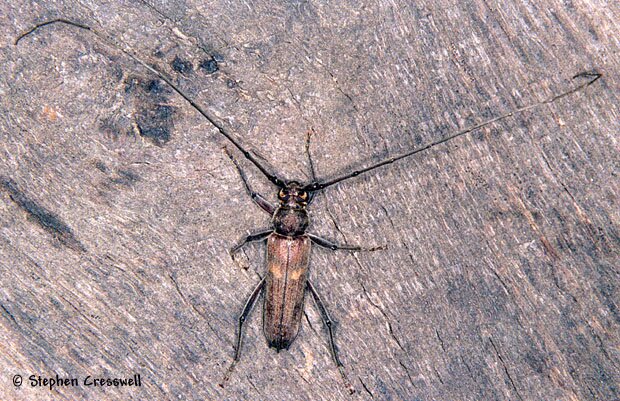
Family: Cerambycidae
Subfamily: Cerambycinae
Length: 16-30 mm
The Banded Hickory Borer is the only North American species in its genus. Each elytron has an oblique pale spot on the basal half, though in some individuals this spot may be reduced or not present at all. With a keen eye or a hand lens, you will see two modest ridges running the length of each elytron, and two spines at the elytral tips. There are also spines on the lateral edges of the pronotum.
It's pretty easy to tell the males from the females with this species, even if you're not a Banded Hickory Borer. The females have antennae long enough to reach the apex of the elytra, while the male antennae are improbably long, reaching the apex of the elytra with about four antennal segments to spare. Larvae feed in the dead limbs of hardwood species, especially hickory and oak. Adults are attracted to lights.
Above: Male Banded Hickory Borer, Leroy Percy State Park, Mississippi
The maps below give an idea of the range of this species. Note that the Mexican states reporting Knulliana cincta are Nuevo Laredo and Sonora. Sonora has some specimens labeled as subspecies sonorensis, and some labeled as subspecies cincta.
Above: countries reporting Knulliana cincta
Below: States and provinces with records of this species

Insects of West Virginia